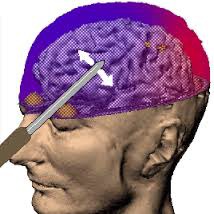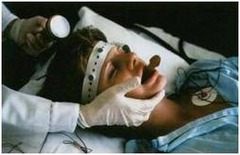Unit 12 Treatment & Therapy (AP Psychology) – Flashcards
Unlock all answers in this set
Unlock answersquestion
Insight Therapies
answer
a type of psychotherapy in which the therapist helps their patient understand how their feelings, beliefs, actions, and events from the past are influencing their current mindset.
question
Eclectic Approach
answer
The type treatment used will depend on the client's problems
question
Psychoanalytic Therapy
answer
Assumption: Problems stem from unconscious conflicts that usually date back to childhood experiences Aim: help patients gain insight into unconscious conflicts Evaluation: old, outdated, and lacks empirical evidence People: Freud
question
Free Association
answer
Patient lays on couch freely exposes thoughts, feelings, and mental images going on in their mind Therapist must encourage the flow of associations to provide clues to what the unconscious is hiding
question
Dream Analysis
answer
Patient describes the "manifest content" of the dream Therapist uncovers the "latent content" of the dream
question
Transference
answer
The patient projects or transfers unresolved conflicts and feelings onto the therapist (Could be love or hatred of a parent) Therapist helps patients gain insight by reliving painful past relationships
question
Psychodynamic Therapy
answer
Similarity to Psychoanalysis because they try to enhance self-insight by focusing on "unconscious forces" that and childhood experiences Differs from Psychoanalysis because they talk face to face and don't meet as much
question
Humanistic Therapies
answer
Assumption: Problems stem from obstacles that block personal growth and potential Aim: Focus on the present time (here and now) Evaluation: Unstructured, vague and subjective leaving it with little empirical proof People: Rogers
question
Client Centered Therapy
answer
Refer to people as "clients" and not patients Non-directive Approach where therapist listens without judgment and refrains from directing the client
question
Unconditional Positive Regard
answer
Important element of client centered therapy developed by Carl Rogers Blanket acceptance and support of a person regardless of what ether person says or does.
question
Active Listening
answer
involves echoing, restating and seeking clarification of what the client says and does, and acknowledging feelings
question
Empathy
answer
recognizing the clients feelings and reflecting it back to the client
question
Behavioral Therapies (aka Behavior Modification)
answer
Assumption: Problems stem from destructive behaviors Aim: Use learning principles to replace problem behaviors with constructive behaviors Evaluation: Effective but minimizes emotions People: Wolpe, Cover-Jones
question
Counterconditioning
answer
Using classical conditioning principles to create a new conditioned stimulus Includes exposure and aversive therapies
question
Systematic Desensitization
answer
A type of exposure therapy that associates a pleasant, relaxed state with gradually increasing anxiety-triggering stimuli.
question
Flooding
answer
A behavioral technique used to treat phobias in which the client is presented with the feared stimulus until the associated anxiety disappears.
question
Aversive Conditioning
answer
use of something unpleasant, or a punishment, to stop an unwanted behavior
question
Token Economy

answer
A system whereby participants earn generalized conditioned reinforcers (e.g., tokens, chips, points) as an immediate consequence for specific behaviors; participants accumulate tokens and exchange them for items and activities from a menu of backup reinforcers.
question
Cognitive Therapies
answer
Assumption:Faulty thoughts, such as negative self-talk and irrational beliefs, cause psychological problems Aims: change the faulty thoughts and replace with better ones Evaluation: Effective but minimizes emotions People: Ellis & Beck
question
Rational Emotive therapy (RET) or Rational Emotive Behavioral Therapy (REBT)

answer
Albert Ellis's cognitive therapy to eliminate emotional problems through the rational examination of irrational beliefs.
question
Cognitive Behavioral Therapy
answer
a popular integrative therapy that combines cognitive therapy with behavior therapy
question
Group Therapy
answer
A group of 3-10 people meet to discuss similar problems, role play new behaviors, and receive instant feedback Evaluation: Effective (financially ; psychologically) and people realize they are not alone in their problems
question
Family Therapy
answer
Views an individual's unwanted behaviors as influenced by, or directed at, other family members hopes to identify unhealthy patterns and create new healthy rules & interactions Couples counseling is very similar
question
Placebo Effect
answer
Defined: you believe it works due to the power of the mind Clients' and therapists' believe the treatment will work and therefore it does
question
Regression towards the mean
answer
Defined: the tendency for unusual events (including emotions) to return to their average state Example: When things hit bottom, going to a therapist is more likely to be followed by improvement than by further descent.
question
Effective Therapies
answer
No one therapy has been shown to be best in all cases but some therapies are better suited for particular disorders Most _________ __________ are when the problem is clear cut
question
Evidence Based Practice
answer
involves clinical decision making that integrates the best available research with clinical expertise and patient characteristics and preferences. In short, available therapies are rigorously evaluated and then applied by clinicians who are mindful of their skills and of each patient's unique situation.
question
EMDR
answer
therapist waves a finger inferno of the eyes of the client to unlock and reprocess previously frozen traumatic memories
question
Light Exposure Therapy
answer
a client is exposed to daily doses of light that mimics outdoor light used to fight against seasonal affective disorder (SAD)
question
Psychopharmacology
answer
Assumption: biological causes exists for the disorders or behaviors Aims: provide the right medication Evaluation: helpful but medicine cannot solve all problems
question
Tardive Dyskinesia
answer
involuntary movements of the facial muscles, tongue, and limbs; a possible neurotoxic side effect of long-term use of antipsychotic drugs that target certain dopamine receptors
question
Anti-Anxiety Drugs
answer
How it works: treats anxiety by increasing the level of GABA and therefore depress the activity in the central nervous system Popular Drugs: Xanax, and Valium Negative Side Effects: addictive and only reduces symptoms in the short term
question
Typical Anti-Psychotic Drugs
answer
How it works: treat schizophrenic hallucinations and paranoia by reducing dopamine activity Popular Drugs: Thorazine Negative Side Effects: tardive dyskinesia
question
Atypical Anti-Psychotic Drugs
answer
How it works: treat all schizophrenic symptoms by blocking dopamine ; serotonin Popular Drugs: Abilify Negative Side Effects: less harmful than typical ones
question
Mood Stabilizing Drugs
answer
How it works: used to treat bipolar disorder by stabilizing Glutamate levels in order to stabilize current and future moods Popular Drugs: Lithium ; Depakote Negative Side Effects: small difference between appropriate and toxic dosage level
question
SSRI
answer
How it works: Treats depression by preventing the reuptake of serotonin Popular Drugs: Prozac, Zoloft, and Paxil Advantages: milder side effects making it the most popular anti-depressant
question
Lobotomy

answer
A now-rare psychosurgical procedure once used to calm uncontrollably emotional or violent patients. The procedure cut the nerves that connect the frontal lobes to the emotion-controlling centers of the inner brain.
question
Electroconvulsive Therapy (ECT)

answer
a biomedical therapy for severely depressed patients in which a brief electric current is sent through the brain of an anesthetized patient
question
repetitive Trans-cranial Magnetic Stimulation (rTMS)
answer
performed on wide-awake patients where magnetic energy penetrates only to the brain's surface does not have the side effects of ECT
question
Resistance
answer
In psychoanalysis, the blocking from consciousness of anxiety-laden material.
question
Interpretation
answer
In psychoanalysis, the analyst's noting supposed dream meanings, resistance, and other significant behaviors and events in order to promote insight.
question
Gestalt Therapy
answer
Get the client to feel whole again.
question
Virtual Reality exposure therapy
answer
An anxiety treatment that progressively exposes people to electronic stimulations of their greatest fears.
question
Behavior Modification: Contingency Management
answer
Reinforcing desired behaviors and withholding reinforcements from undesired behaviors.
question
Aaron Beck's Depression Therapy
answer
He would change their thinking by revealing the absurdity of their self-defeating ideas
question
Stress Inoculation Therapy
answer
Teaching people to restructure their thinking in stressful situations (i.e. saying positive things)
question
Seasonal Affective Disorders
answer
A mood disorder characterized by depression that occurs at the same time every year.
question
Therapeutic Alliance
answer
A bond of trust and mutual understanding between a therapist a client, who work together constructively to overcome the client's problem.
question
Resilience
answer
The personal strength that helps most people cope with stress and recover from adversity and even trauma.
question
Biomedical Therapies
answer
These are physiological interventions that focus on the reduction of symptoms associated with psychological disorders. Three procedures used are drug therapies, electroconvulsive (shock) treatment, and psychosurgery.
question
Double blind studies
answer
An experimental procedure in which neither the subjects of the experiment nor the persons administering the experiment know the critical aspects of the experiment.
question
Deep Brain Stimulation
answer
a nonsurgical treatment to reduce tremor and to block involuntary movements in patients with motion disorders. Small electric shocks are delivered to the thalamus or the globus pallidus, rendering these parts of the brain inactive without surgically destroying them.
question
Psychosurgery
answer
Surgery that removes or destroys brain tissue in an effort to change behavior.



